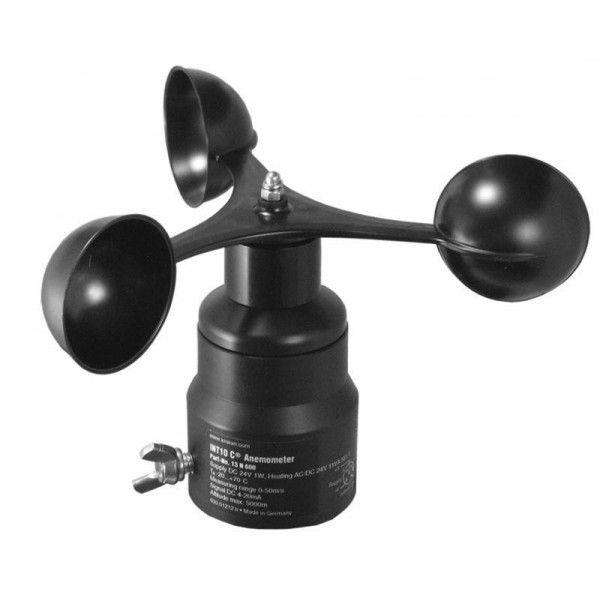Selecting the Right Anemometer: A Comprehensive Acquiring Guide
Selecting the Right Anemometer: A Comprehensive Acquiring Guide
Blog Article
All You Required to Know About Anemometers: Exactly How They Work, Why They Matter, and Where to Use Them
Anemometers, however often neglected in the realm of scientific instruments, play a vital function in different fields, supplying useful insights into wind rate and air flow patterns. As we dig right into the details of anemometer technology, we will reveal the internal operations of these gadgets, their relevance, and the key factors to consider when picking the best anemometer for specific applications.

Anemometer Fundamentals
A crucial tool made use of to gauge wind rate and direction, the anemometer plays a critical function in weather forecasting and various sectors. An anemometer typically is composed of 3 or 4 cups that revolve in the wind, a vane that directs right into the wind, and sensors to track the movements or turnings.
There are different types of anemometers offered, including cup anemometers, vane anemometers, hot-wire anemometers, and sonic anemometers, each with its one-of-a-kind functions and applications. Cup anemometers are commonly utilized for standard wind rate measurements, while vane anemometers are chosen for directional measurements.
Principles of Anemometer Operation
Building on the fundamental understanding of anemometer essentials, the principles of anemometer operation clarify the auto mechanics behind wind speed and instructions measurements. Anemometers operate on the principle of airflow affecting a sensor, triggering it to rotate. Cup anemometers, for example, have three or more cups that catch the wind, causing them to rotate faster as the wind speed rises. The turning speed is after that exchanged a wind rate dimension. Vane anemometers, on the other hand, utilize a tail or a probe that straightens itself with the wind direction, supplying a dimension of wind instructions based upon the orientation of the sensing unit. Hot-wire anemometers rely upon a heated wire that cools down as wind overlooks it, with the price of cooling identifying the wind speed. Ultrasonic anemometers step wind speed and instructions by analyzing the moment it considers ultrasonic signals to travel between transducers. Understanding these concepts is essential for precise and trustworthy wind dimensions in different applications.
Relevance of Anemometers
Anemometers play an essential role in determining wind rate and direction, supplying important information for weather projecting, environment research studies, environmental monitoring, and aviation operations. Meteorologists depend on anemometers to gather accurate wind information, aiding them understand climate patterns, anticipate tornados, and concern timely warnings to the public. Wind farm drivers utilize anemometers to assess wind problems and take full advantage of electricity manufacturing from wind turbines.
Applications Throughout Numerous Industries
In the eco-friendly energy market, anemometers play an important duty in analyzing wind problems for wind farm placements, making certain optimum energy production. Industries like building and construction and mining use anemometers to check wind rates, crucial for safety methods, particularly when functioning at elevations or in open-pit mines where strong winds can present threats. In agriculture, anemometers assist farmers in handling plant spraying by offering real-time data on wind speed to avoid drift.

Selecting the Right Anemometer for Your Needs
For general objectives, a cup anemometer is appropriate for determining wind speed, while a vane anemometer offers wind direction information. Hot-wire anemometers are suitable for reduced airspeed measurements, and ultrasonic anemometers supply high precision and longevity.

Conclusion
In final thought, anemometers play a vital role in measuring wind speed and Continued instructions across various industries. Comprehending the concepts of anemometer procedure is crucial for selecting the right tool for details requirements. From meteorology to aeronautics, anemometers are important devices for accumulating precise data and making certain safety and security in various applications. It is essential to take into consideration the value of anemometers in order to make educated decisions when choosing one of the most ideal gadget for measuring wind problems.
There are various kinds of anemometers available, including mug anemometers, vane anemometers, hot-wire anemometers, look at this website and sonic anemometers, each with its unique features and applications. Mug anemometers are typically made use of for basic wind speed dimensions, while vane anemometers are preferred for directional dimensions. Hot-wire anemometers are suitable for low airspeeds, and sonic anemometers are excellent for high-precision measurements in research study and industrial setups.Building on the fundamental understanding of anemometer fundamentals, the concepts of anemometer procedure clarify the technicians behind wind speed and direction measurements. For general objectives, a cup anemometer is ideal for determining wind rate, while a vane anemometer gives wind direction information.
Report this page